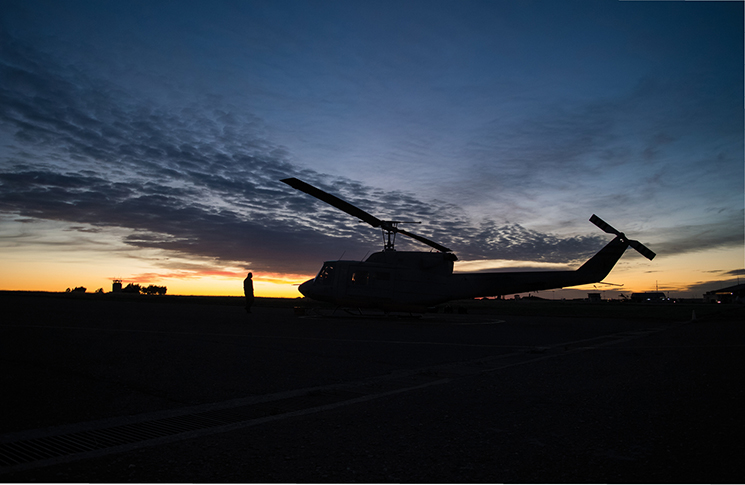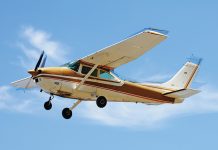- When planning for a day VFR rotorcraft flight, what is the final reserve fuel in accordance with Part 91 MOS 19.02?
- 20 minutes
- 30 minutes
- 45 minutes
- 30 minutes plus 5% of trip fuel
- When planning for a night VFR rotorcraft flight, what is the final reserve fuel in accordance with Part 91 MOS 19.02?
- 20 minutes
- 30 minutes
- 45 minutes
- 30 minutes plus 5% of trip fuel
- When planning for an IFR rotorcraft flight, what is the final reserve fuel in accordance with Part 91 MOS 19.02?
- 20 minutes
- 30 minutes
- 45 minutes
- 30 minutes plus 5% of trip fuel
- Contingency fuel for a rotorcraft flight in accordance with Part 91 MOS 19.02 is:
- required for VFR flights
- required for night VFR flights
- required for IFR Flights
- not applicable
- What is the alternate minima for a rotorcraft in accordance with Part 91 MOS 8.08 for day VFR flight?
- 1,000 ft and 3 km visibility in class G airspace
- 1,500 ft and 8 km visibility
- 1,500 ft and 8 km in other than class G airspace
- either a or c
- What is the alternate minima for a rotorcraft in accordance with Part 91 MOS 8.08 for night VFR flight?
- 1,500 ft and 8 km visibility
- 1,000 ft and 3 km visibility
- the alternate minima published on the instrument approach chart
- LSALT for the final route segment plus 500 ft and 8 km visibility
- What is the alternate minima for a rotorcraft in accordance with Part 91 MOS 8.08 for IFR flight?
- the alternate minima published on the instrument approach chart
- by day, to an aerodrome without an IAP – LSALT for the final route segment plus 500 ft and 8 km visibility
- by day, to an aerodrome with one or more IAP, none of which the pilot is able to conduct – LSALT for the final route segment plus 500 ft and 8 km visibility
- all of the above
- In accordance with the Part 91 MOS 8.05 for night VFR flight, you must nominate a destination alternate aerodrome that is within one hour flight time of the planned destination, unless:
- the destination is served by a ground-based navaid and the navaid is fitted to the aircraft and you are competent to use the navaid
- the aircraft is fitted with an approved GNSS and you are competent to use the GNSS
- the runway lights are permanently on
- either a or b
- In accordance with the Part 91 MOS 26.11, if you are flying a helicopter single pilot under night VFR over land or water, you must be able to:
- navigate using an approved GNSS
- maintain attitude by using visual external cues from light on the ground, celestial illumination or by lighting fitted to the helicopter
- the helicopter must be fitted with an automatic pilot system or an automatic stabilisation system
- either b or c
- The minimum height to fly a helicopter over a populous area or public gathering, in accordance with CASR 91.265 and MOS 12.01 is:
- 500 ft within a horizontal radius of 300 m of a point on the ground or water immediately below the helicopter
- 500 ft above the ground or water immediately below the helicopter
- 1,000 ft within a horizontal radius of 300 m of a point on the ground or water immediately below the helicopter
- 1,000 ft above the ground or water immediately below the helicopter
- You are planning to land your helicopter inside Class C airspace. You are required to submit a flight plan in accordance with Part 91 MOS 9.02 if you are:
- IFR
- VFR
- VFR and the landing area is within a controlled aerodrome circuit
- both a & b
- If you are planning a VFR flight where the first track is 125 magnetic, what should your first VFR cruising level be?
- an even altitude plus 500 ft
- an odd altitude plus 500 ft
- an even altitude
- an odd altitude
- What is the minimum height to fly a helicopter over a non-populous area, in accordance with CASR 91.267 and MOS 12.02?
- 500 ft within a horizontal radius of 300 m of a point on the ground or water immediately below the helicopter
- 500 ft above the ground or water immediately below the helicopter
- 1,000 ft within a horizontal radius of 300 m of a point on the ground or water immediately below the helicopter
- 1,000 ft above the ground or water immediately below the helicopter
- How close to your take-off time must you study an authorised weather forecast or obtain an update?
- 30 minutes
- 1 hour
- 1 hour 30 minutes
- 2 hours
To view the answers, go to the next page using the page navigation buttons below.





